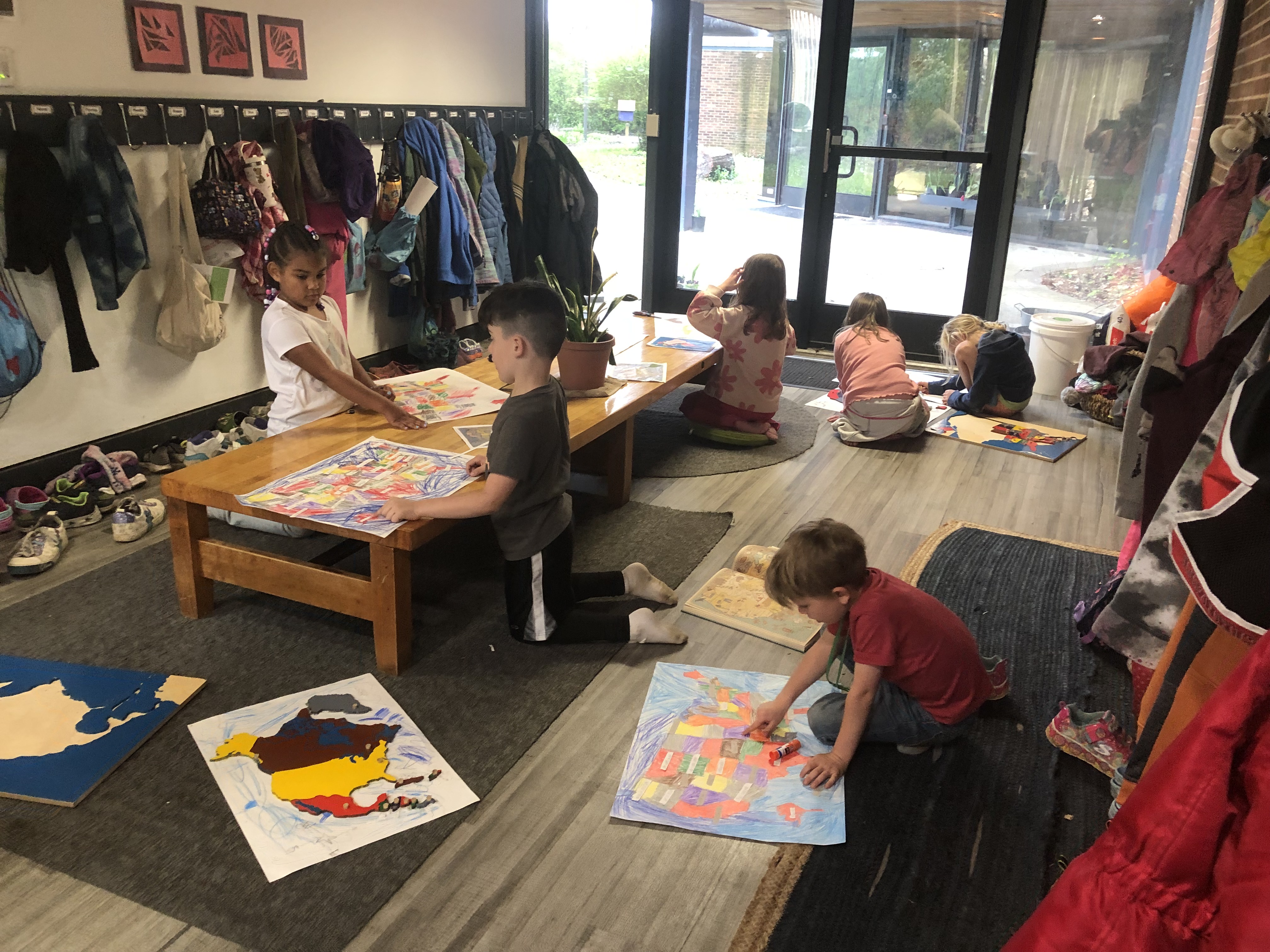 Welcome to the EAGLES
Welcome to the EAGLES
 Work in the Eagle classroom involves the transition from concrete to more abstract learning. Reading fluency, refining handwriting, computer keyboarding, math operations and memorization, offer challenge areas for the 6 to 9-year old.
Work in the Eagle classroom involves the transition from concrete to more abstract learning. Reading fluency, refining handwriting, computer keyboarding, math operations and memorization, offer challenge areas for the 6 to 9-year old.
Curriculum: The Great Lessons of the Cosmos are the focus of the Eagle science and culture curriculum. They enjoy their first lessons in astronomy, physics, botany, zoology, physical & social geography, and they engage in research projects, independent study, and creative arts. Much emphasis is placed on the study of biomes on the planet earth. Eagles work to perfect the arts of self-government, personal record keeping and conflict resolution.
A highlight of the Eagle curriculum is the 3-year cycle of the Wax Musuem. This traditional protocol offers Eagle students the opportunity to research, identify, classify, and depict a chronology of life forms, or episodes in human history, as events in a Timeline of Life drama. Year one: "The Timeline of Life" (from single-celled organisms to the emergence of human life). Year two: "The Timeline of Human Life" (from early cave dwellers to modern humans.) Year three: "The Timeline of Human Communication" (from the oral era of verbal communicaton to the written and digital eras.) The project culminates each year in the month of February as a "Wax Museum" – a silent staging of life's drama, with costumes and props, created and enacted by students for the edification and enjoyment of parents and the entire school family.
|
Sheila Brown– Program Advisor |
Eagle students are handed the huge responsibility of managing their own personal affairs such as field trip permission slips and fees, catered lunch forms and fees, lunch boxes, clothing needs, and handing in folders of completed work. Your supporting role is important as they take ownership of these tasks and evolve into independent and competent citizens of the world. See NM HANDBOOK for more information on Student Responsibilities, Birthdays & Celebrations, Lunch.